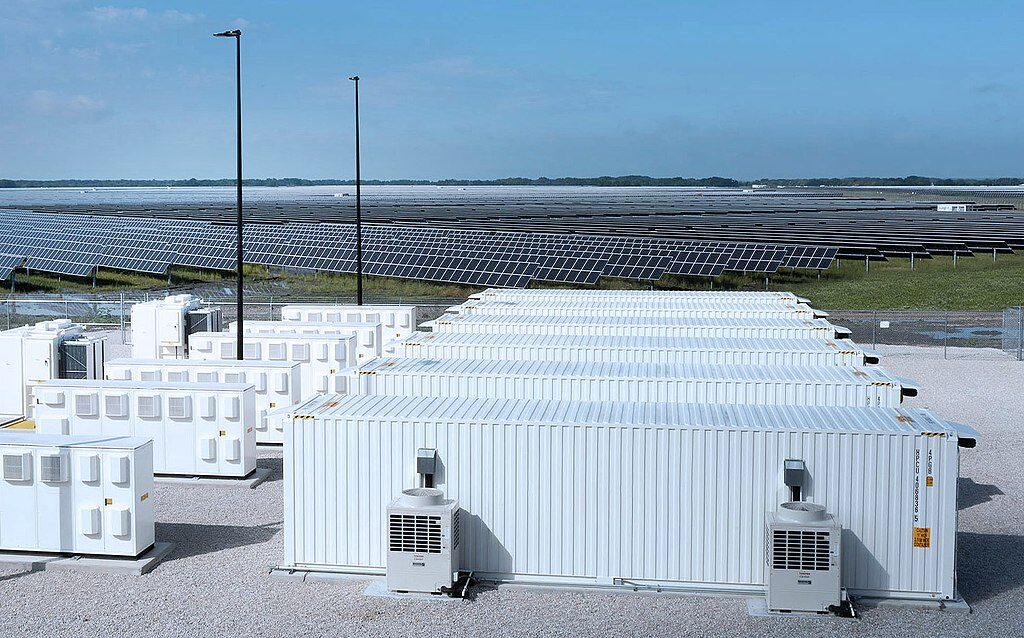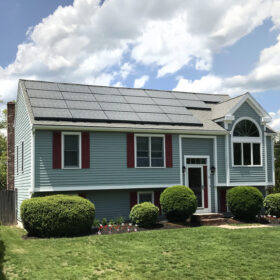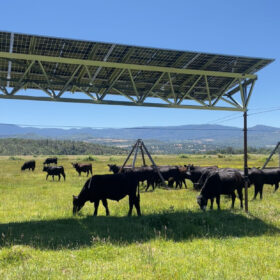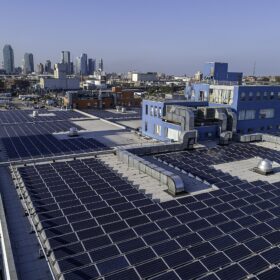Kajal Sheth is a Houston-based, Staff Engineer at Reactivate (an Invenergy Company), leading the design and performance optimization of solar and energy storage projects that power thousands of American homes and businesses. Her work combines technical rigor, sustainability, and innovation, ensuring that each project delivers reliable, affordable, and efficient clean energy to the communities it serves. In this interview, Kajal reflects on her career journey, sharing insights from hands-on experience in solar design and exploring how data science and artificial intelligence are shaping the future of clean energy and driving smarter, more resilient power systems.
Q: Kajal, your work in PV spans both engineering and data analytics. Yet, you began your career in petroleum and systems engineering. How did your background in oil and gas evolve into a career at the intersection of solar, storage, and data science?

A: Learning and acquiring knowledge has always shaped who I am. As a child, I was endlessly curious about how things worked. That drive for technical understanding led me, in high school, to participate in the NASA Ames Space Settlement Contest (now known as the NSS Gerard K. O’Neill Space Settlement Contest) and win the grand award in the individual category. The project explored how life could exist in space using alternative energy sources in zero gravity, focusing on structural stability and technical design. It was through this project that I first discovered my passion for the energy sector and gained hands-on insight into spacecraft propulsion.
My curiosity about energy systems inspired me to earn a degree in Petroleum Engineering and begin my career at Halliburton Offshore Services, where I gained exposure to advanced and emerging sustainable technologies. My undergraduate course in Non-Conventional Hydrocarbon Resources is what drove me to pursue my graduate degree in the Renewable sector, and specifically in Solar. The exponential growth in solar energy companies, fueled by government policies, encouraged me to pursue an M.S. degree in Renewable Energy and Systems Engineering. My work now bridges engineering and data analytics to drive innovation in solar and storage systems, with a focus on renewable energy, energy management, and data-driven solutions that accelerate the global clean energy transition.
Q: You have worked directly with battery energy storage, and in fact a book you co-authored, Comprehensive Guide to Battery Energy Storage Systems (BESS), was published in late October 2025. What do you see as the key challenges in integrating BESS with solar, especially for distributed projects, and what inspired you to write this book?
Integrating BESS with solar involves challenges in coordination, performance optimization, and lifecycle management. I use Python with pvlib, pandas, and scikit-learn to complement PVsyst, optimize design, detect SCADA anomalies, and model battery aging. These tools help balance efficiency and longevity, while future advances in probabilistic forecasting and machine learning-based health scoring will enhance predictive maintenance, reliability, and financial performance of distributed solar-plus-storage systems.
Through this book, my co-authors and I set out to create a unified, practical resource on a rapidly evolving technology. As lithium-ion costs declined and large-scale projects expanded, we recognized the need for a guide that connects battery fundamentals with real-world insights in engineering, finance, and operations. The book equips professionals, investors, policymakers, and decision-makers with the knowledge to navigate and advance the reliable integration of BESS into modern power systems.
Q: The PV Soiling Loss Calculator you developed has gained attention for bridging EPC and O&M. What inspired this project, and how does it change the way stakeholders think about performance risk and maintenance?
A: The PV Soiling Loss Calculator addresses one of solar’s most overlooked issues: energy loss from dust and snow. Unlike generic 2% assumptions, it quantifies site-specific losses based on tilt, rainfall, and cleaning frequency, turning soiling into a measurable performance risk. The model links EPC and O&M accountability, enabling data-driven cleaning schedules that improve forecasts, increase project bankability, and optimize maintenance planning.
Q: You have designed PV systems across diverse environments from rooftops to large-scale ground mounts. What are some design lessons that stand out when balancing technical efficiency, cost, and community impact?
A: At Reactivate, I serve as a Solar Engineer within the EPC team, where I design and optimize solar projects ranging from 5 MW to 50 MW, including rooftop, canopy, and ground-mount systems across flatlands, brownfields, and landfills. I bring more than six years of experience spanning development, design, and operations to my role, which bridges technical precision, cost efficiency, and community benefit. Supporting our mission to expand equitable clean energy access for low- to moderate-income communities, I collaborate with site environmental and interconnection teams to ensure each project is both technically sound and environmentally responsible. This includes GIS-based site assessments to avoid wetlands and floodplains, grid-impact studies, and preparing single-line diagrams and interconnection applications to optimize system reliability and voltage stability.
On the technical side, I tailor system designs using fixed-tilt or tracker configurations, bifacial modules, and mounting solutions suited to site conditions to maximize yield and minimize environmental disturbance. In addition to the technical and operational domains, I frequently engage with the legal, policy, and financial aspects of project delivery. I support the permitting and compliance process, ensuring adherence to environmental regulations, interconnection standards, and contractual obligations. I also participate in Request for Proposal (RFP) evaluations, Power Purchase Agreement (PPA) reviews, and contract coordination, aligning engineering decisions with project economics. Working with the development and finance teams, I help evaluate payback periods, and return on investment (ROI) metrics, ensuring projects meet both performance and investor-return expectations. Understanding the policy landscape is also integral to my role. I stay informed on federal tax credits (ITC/PTC), renewable portfolio standards (RPS), state-level incentives, and interconnection reform policies that influence project feasibility and financial modeling.
Q: Your current work with Reactivate involves bringing solar to under-resourced communities and farmland. How do you see community solar contributing to both equity and grid resilience in the next decade?
A: One recent example from a project I worked on is our Verduin Community Solar site in Chicago Heights, Illinois, which was announced on NBC Chicago News. It sits on about 20 acres of previously vacant farmland and uses roughly 5,200 panels with 2.821 MWp DC. The site is in an environmental justice community, so we designed subscriber outreach and allocation to prioritize working-class, low, and moderate-income households.
Projects like Verduin use advanced inverters and smart controls to stabilize voltage, reduce peak demand, and ease grid congestion while being storage-ready for future grid support. Community solar expands clean-energy access, revitalizes underused land, and helps meet regional decarbonization goals through distributed 1–5 MW systems that enhance resilience and equity.
Q: How does your work contribute to strengthening U.S. energy independence and enhancing resilience against global energy market fluctuations?
A: As a Solar Engineer at Reactivate, my work directly supports U.S. energy independence by expanding access to distributed, community-based solar projects that generate clean power locally. By designing efficient, data-driven solar systems optimized for site-specific conditions, I help reduce dependence on imported fossil fuels and centralized grid infrastructure, creating a more resilient and self-sufficient energy network.
At Reactivate, we focus on developing and operating solar assets that serve low- to moderate-income communities, which not only democratizes access to clean energy but also enhances grid reliability at the community level. Each system I design contributes to decentralized energy generation, stabilizing the grid while lowering electricity costs for consumers. This distributed approach transforms renewable energy from simply an environmental initiative into a strategic tool for national energy security. For example, my work contributed to our recent community solar projects in Illinois and New York, totaling 14.4 MW AC and serving approximately 5,000 households, providing up to 20 percent savings in monthly energy costs for subscribers. Over their operational lifespan, these systems are expected to offset approximately 667,788 metric tons of CO₂ emissions, equivalent to eliminating 748 million pounds of coal burned over the projects lifespans, which demonstrates the tangible environmental and economic value of local renewable generation.
Beyond technical design, my work also involves integrating storage solutions, evaluating interconnection requirements, and ensuring each project aligns with both environmental and regulatory standards. These efforts collectively strengthen grid resilience against supply disruptions and price fluctuations in the global energy market. By supporting domestic manufacturing, creating local jobs, and keeping energy dollars circulating within the U.S. economy, Reactivate’s projects and my engineering work help build a cleaner, more reliable, and more independent energy future for the nation.
Q: The solar industry is moving toward automation, predictive maintenance, and digital twins. What emerging technologies most excite you, and where do you think engineering teams should invest their focus?
A: Predictive maintenance is one of the most transformative technologies in solar and storage operations. By combining real-time SCADA data, sensor readings, and AI-based analytics, it enables early detection of faults like inverter derating, string underperformance, and battery degradation before they impact generation. Instead of relying on fixed schedules, predictive models identify anomalies and forecast failures, allowing maintenance teams to act proactively and optimize O&M resources. As automation and digital twins evolve, predictive maintenance will become central to asset management, turning reactive plants into intelligent, self-optimizing systems. Engineering teams should establish strong MLOps for versioning, monitoring, and retraining, focusing on high-value cases like hotspot detection, tracker misalignment, DC faults, and PCS derates and use edge and cloud-based learning to enhance reliability and operational efficiency.
Q: Have your projects or designs received recognition from industry bodies, grant programs, or sustainability organizations?
A: Yes. Recent recognition includes media, federal prize, and industry partnerships that spotlight our work. Our Verduin community solar project in Chicago Heights was featured by NBC Chicago on Earth Day as an example of how community solar brings clean energy to more residents in the region.
Additionally, our work has been recognized through the U.S. Department of Energy’s Community Power Accelerator Prize, where we were selected in the second round to advance community solar that serves low income and disadvantaged communities. This recognition validates both our technical rigor and equity-driven approach. Within that cohort, Reactivate’s Illinois portfolio includes two projects totaling 5.8 MW in Sauk Village and Chicago Heights, both located in environmental justice communities. The broader program highlights projects nationwide that combine clean-energy deployment with community ownership, workforce training, and local resilience. These recognitions reflect our commitment to building technically strong, socially impactful, and grid-supportive solar projects. Across the broader cohort, similar initiatives from Maryland to Hawaii and New Mexico focus on combining clean energy with community ownership, workforce training, and grid resilience. These recognitions highlight that our projects are both technically sound and designed to create measurable social and economic benefits alongside renewable power generation.
Q: You have achieved a lot at a young age, including certification, publications, leadership roles, and now a book in progress. What advice do you have for early-career engineers, especially women in energy, who want to make a similar impact?
A: My advice to young engineers, especially women, is to lead with confidence and curiosity. Growth happens when you step outside your comfort zone. Every challenge or setback is a lesson that sharpens your intuition. Seek mentors, but also mentor others early; teaching accelerates learning. The energy transition needs diverse voices, because it is about inclusion and innovation as much as technology.
Ellen F. Warren writes about industry leaders and trends in various sectors, including fintech, IT innovation, healthcare, business, energy, supply chain, commercial real estate, and entrepreneurship.
The views and opinions expressed in this article are the author’s own, and do not necessarily reflect those held by pv magazine.
This content is protected by copyright and may not be reused. If you want to cooperate with us and would like to reuse some of our content, please contact: editors@pv-magazine.com.








By submitting this form you agree to pv magazine using your data for the purposes of publishing your comment.
Your personal data will only be disclosed or otherwise transmitted to third parties for the purposes of spam filtering or if this is necessary for technical maintenance of the website. Any other transfer to third parties will not take place unless this is justified on the basis of applicable data protection regulations or if pv magazine is legally obliged to do so.
You may revoke this consent at any time with effect for the future, in which case your personal data will be deleted immediately. Otherwise, your data will be deleted if pv magazine has processed your request or the purpose of data storage is fulfilled.
Further information on data privacy can be found in our Data Protection Policy.